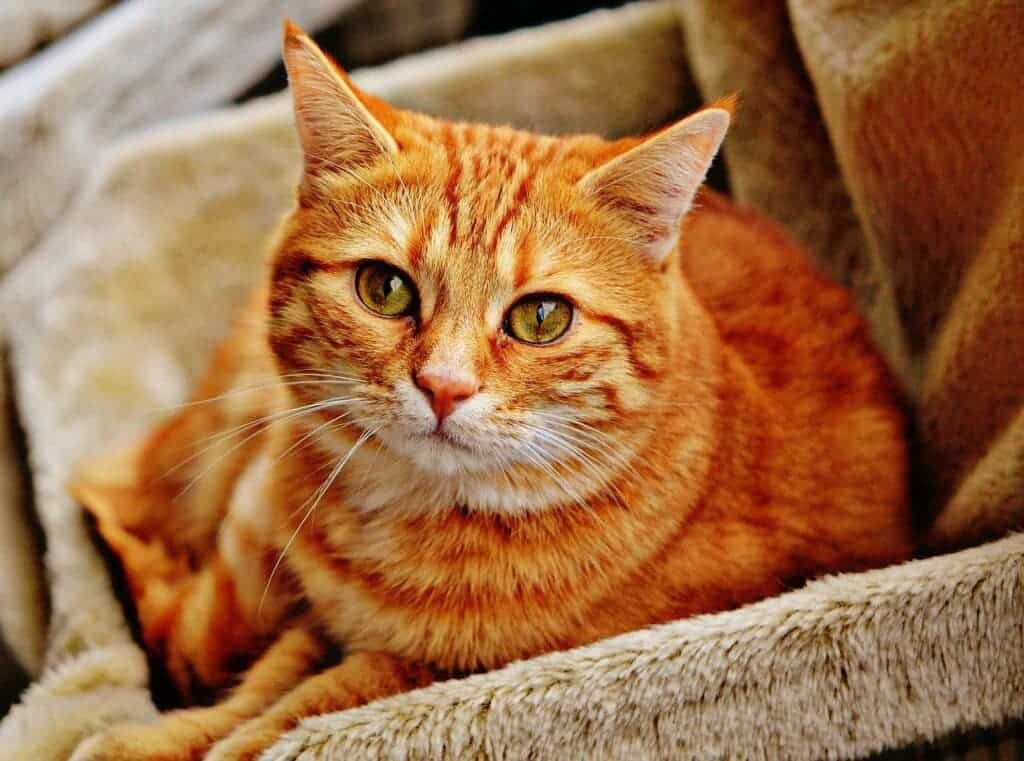
House cats exhibit quite a great deal of diversity in the coloration and patterns of their fur compared to their wild feline relatives. One of the most common coat patterns is the tabby, consisting of undulating swirls, stripes, and dots — a timeless classic. Now, scientists have figured out the development process, showing that the tabby pattern remarkably starts appearing while a kitten is still an embryo.
Greg Barsh, a scientist at the Hudson Alpha Institute for Biotechnology and a professor of genetics and pediatrics at Stanford University, and colleagues collected and examined nearly a thousand house cat embryos from pregnant feral cats admitted to veterinary clinics for spaying. Most of these embryos were between 25 and 28 days old, which is apparently old enough for skin cells to develop.
“Color patterns are one of these unsolved biological mysteries; there’s no go-to model organism to study it — mice don’t have stripes or spots,” said Barsh. “The color patterns and variability that you see in animals like tigers, cheetahs and zebras prompted some central questions for us: What are the developmental genetic mechanisms and the cellular mechanisms that give rise to these patterns and how have they been altered during mammalian evolution to give rise to the amazing diversity of shape and form we see today?”
The gene that signals where stripes, spots, and blotches go
When the researchers examined the embryos under a microscope, they saw thicker skin dispersed across regions with thinner skin. The pattern resembled the tabby coat of an adult cat, which was very surprising considering that, at this stage, the embryos had yet to develop hair follicles and pigments, the most important components that color animal skin and fur.
Upon closer inspection, the team found that cats have at least two different types of skin cells, each of which is expressed by distinct sets of genes. For tabby cats, the DKK4 gene is essential since it is the one responsible for mapping the pattern of thick and thin skin in the developing kitten embryo.
Thick skin had more proteins expressed by the DKK4 gene and would later be covered in darker fur, while the thin patches had less DKK4 expression and would be covered in lighter-colored fur.
These findings nicely complement those from an earlier study, also led by Barsh, which identified a gene that controls coat color variation in tabby cats.
“We knew from studying domestic cats that there were other genes that contributed to color pattern formation; we just didn’t know what they were,” Barsh said.
Not all tabby cats are the same, though. Mutations always occur, resulting in alterations in coat colors and patterns. For instance, some tabbies have white spots or thinner stripes.
Beyond answering a mere curiosity, the study is extremely valuable because it advances our understanding of one of the most important aspects of developmental biology: pattern formation.
Part of a grander picture
In 1952, British mathematician Alan Turing, regarded as the father of modern computing, published a landmark paper that described how biological cell patterns form and when they know it’s time to stop division.
The brilliant mathematician imagined that biological patterns are formed due to interactions of certain chemicals he called “morphogens” that initiated and directed patterns by triggering on- or off-switches. Turing used math to show that these morphogens could move in 3-D space, a movement now known as diffusion-reaction, and deconstructed patterns seen in animal fur and leaf shapes.
We now know that Turing’s morphogens are actually activating or inhibiting molecules produced by the expression of genes. Turing patterns in hair follicles, chicken feathers, and teeth-like shark “scales” have all directly been shown to be produced by the interaction between an activator and an inhibitor chemical. In the case of tabby cats, the DKK4 gene acts as an inhibitor.
However, Turing patterns can be found everywhere in nature. The diffusion-reaction equations have been used to model countless 2-D and 3-D patterns seen across the natural world, from fingerprints to semi-arid landscapes.
Now that scientists know which gene is important in house cat fur development, they can look for it in other species. They believe the same development process is present in tigers and cheetahs, considering house cats have been bred by humans for only 9,000 years.
But there are also other unanswered questions. The DKK4 gene alone doesn’t explain the rich array of colors sported by the fur of domestic cats.
“This is one of the big unanswered questions in our work — how to connect the process of prepattern formation to the process that implements the pattern later in development,” Barsh said in a statement. “That’s something that we’re actively trying to figure out.”
The findings appeared in the journal Nature Communications.


